Updated on March 6, 2024 by Julie McCool
Visit Occoquan Regional Park in Northern Virginia to enjoy easy hikes, outdoor dining, boating, and fascinating history at the Turning Point Suffragist Memorial. The park is located on the bank of the Occoquan River close to the Workhouse Arts Center and other Northern VA parks.
We love a long hike on one of Virginia's many scenic trails, but sometimes time is short and we need a quicker option. This Occoquan Regional Park hike includes a mostly easy, one-mile loop trail through pretty woods and a portion of the Potomac Heritage Trail,.
Disclosure: This article may contain affiliate links. We will make a small commission from these links if you order something, at no additional cost to you.
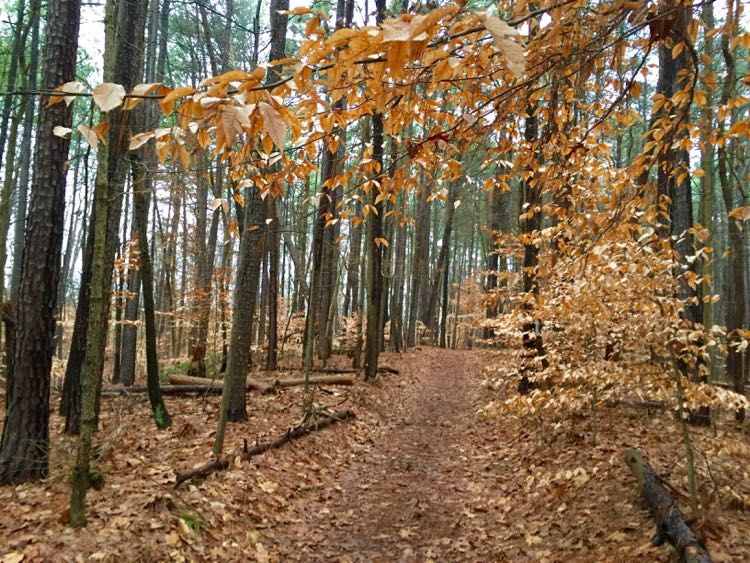
Occoquan Regional Park, sits on the banks of the Occoquan River at the southern edge of Fairfax County. While hiking in the park is fairly limited, several important land and river trails intersect here. The southern end of the Fairfax Cross County Trail (CCT) begins in the park and continues 40 miles north to the banks of the Potomac River in Great Falls.
Our short hike follows a segment of both the CCT and the Potomac Heritage Trail (PHT), a designated National Scenic Trail that extends over 800 miles through Pennsylvania, Maryland, Virginia, and DC.

Boaters and paddlers can also explore historic waterways from the park. In June of 1608, this section of the Occoquan River was explored by Captain John Smith, and the river is now part of the Captain John Smith Chesapeake National Historic Trail.
Occoquan Regional Park Hike
There are three paved loop trails near the park athletic fields, from one to two miles long, but we prefer a loop through the woods. Our route begins at the large parking area near the boat launch. Follow the paved trail to the right next to the river. You'll have a distant view of the town of Occoquan before the trail heads uphill and back up to the road you drove in on.

This paved section is part of the Cross County Trail, which parallels the road until it reaches the Workhouse Arts Center. Just past a small parking area you'll see steep steps climbing to your left, marked with a Scenic View sign. Climb those steps and you enter a pretty strip of woods on a ridge that parallels the road.


Once the trail levels out you'll see a group of benches at Shepherd Point. Unfortunately, the view toward Occoquan is blocked by trees even in winter. You'll likely hear a steady stream of traffic from busy route 123 below.

Return to the main trail and head left, following the easy dirt path through the woods. In time, you'll reach a trail heading downhill to your right. Follow the trail down the hill and turn right to return on the paved CCT, or turn around and double back through the woods.
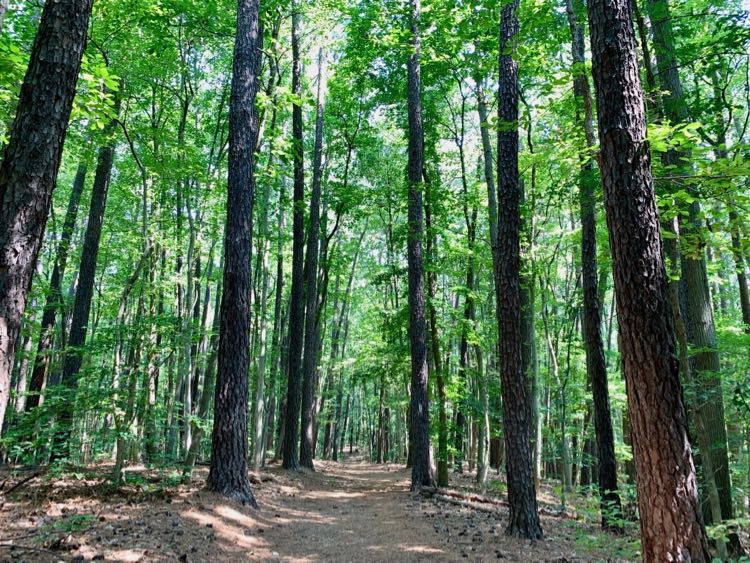

On your return trip, stay on the main road rather than following the path down to the river. This gives you an opportunity to visit two historic sites.
Turning Point Suffragist Memorial
The Turning Point Suffragist Memorial, which opened in 2021, honors the seven-decade-long fight for women's suffrage. Displays at the memorial describe the difficult road to ratification of the 19th Amendment and the women who fought long and hard for their rights.

A significant turning point in the fight for women's right to vote took place nearby. In June of 1917, members of the National Woman's Party picketed the White House, increasing pressure on President Wilson to support women's suffrage. 120 of the protesting women were arrested and sent to prison when they refused to pay what they considered an unjust fine.
Many of these arrested suffragists were sent to Occoquan Workhouse to serve sentences ranging from 30 days to 6 months. These educated and dedicated women endured horrific treatment and deplorable conditions at the Workhouse.
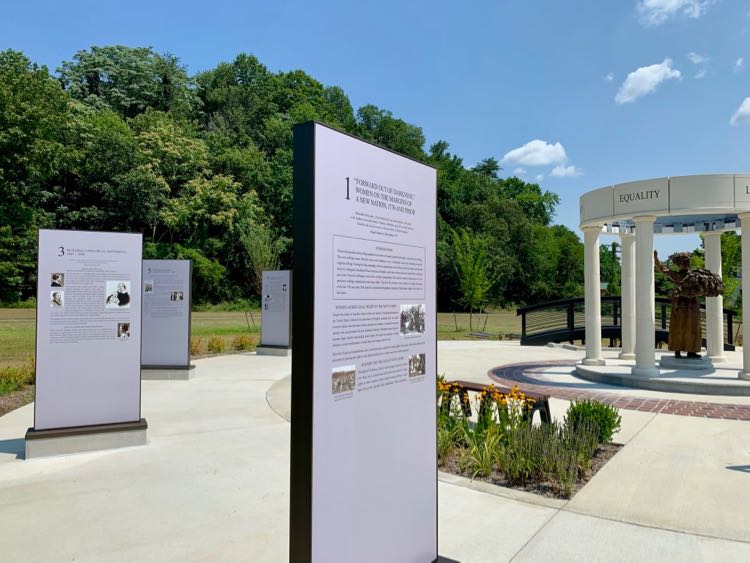
Today, you can learn about the suffrage fight here at the memorial and at the nearby Lucy Burns Museum at the Workhouse Arts Center.
A section of the White House fence where women picketed is on display at the memorial.
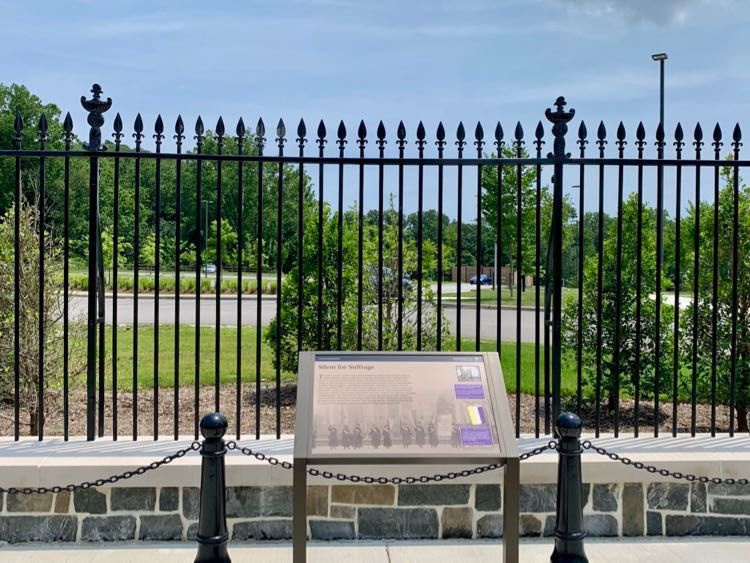
In late 1917 the women were finally released, under public pressure and indignation over their treatment. The events at Occoquan helped turn the tide and gain support for women's suffrage. The memorial includes a section of the White House fence where women
Beehive Brick Kiln at Occoquan Regional Park
The large Beehive Brick Kiln is one of eight kilns along the Occoquan River at the start of the 20th century. The 100-year-old kiln and chimney are the last of the beehive kilns that once operated here.

Occoquan Workhouse prisoners used the kiln to create many of the red bricks used in Northern Virginia and Washington DC buildings.

You can't enter the kiln but you can peek in and see the impressive brick interior.

More Things to Do at Occoquan Regional Park
The Brickmakers Cafe
Stop at the nearby Brickmakers Cafe for a meal, snack, or drink. If you sit on the patio you can enjoy a view of the river while you eat. The casual menu includes salads, sandwiches, burgers, and more and they sell beer, wine, and soft drinks.
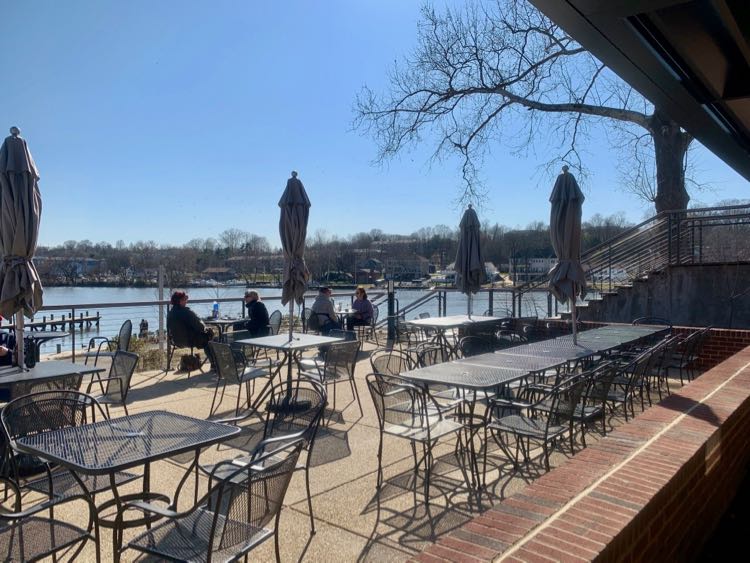
On one visit, we enjoyed the Fish and Chips and the Roasted Corn and Avocado Salad. Daily specials are usually a good choice.

More Outdoor Activities at and Near Occoquan
Occoquan Regional Park offers several other outdoor facilities including:
- Additional hiking trails
- Marina and boat launch with seasonal boat and kayak rentals
- Picnic areas and gazebos
- Baseball and softball batting cages
- Athletic fields
Visit the Occoquan Regional Park website for more information. The park is located at 9751 Ox Road in Lorton Virginia.
You can visit the park on a Fairfax County scenic drive on pretty Virginia Byways. There are more great hikes nearby at Fountainhead Regional Park and the Mason Neck Peninsula.
Visit Historic Occoquan Virginia
After your park visit, head across the river to the beautiful town of Occoquan. One of the most quaint small towns in Northern Virginia, Occoquan has a walkable downtown packed with great local restaurants, shops, history, and nature.
Follow Fun in Fairfax VA on Facebook | Pinterest | Instagram | Threads | Twitter
